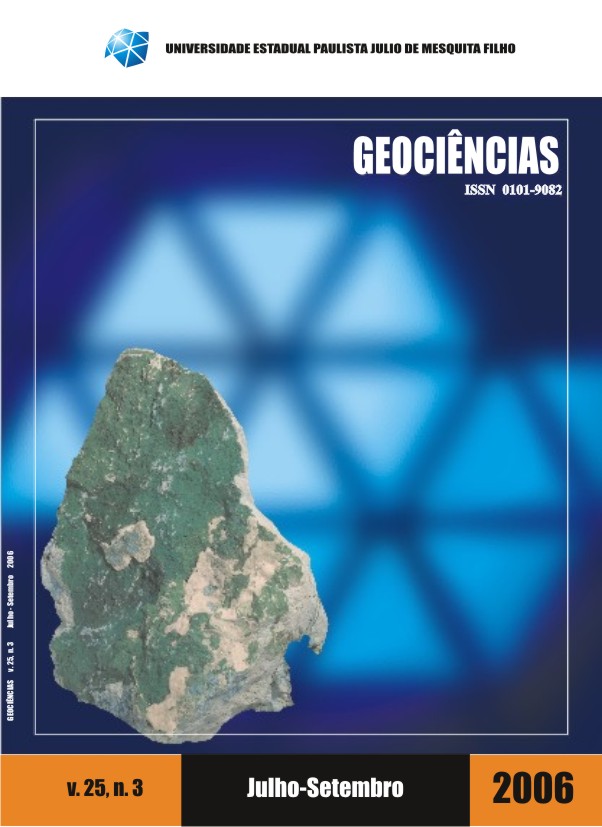RITMITOS DE ITU: PETROGRAFIA E CONSIDERAÇÕES PALEODEPOSICIONAIS
Resumen
Amostras de ritmito da Pedreira e do Parque de Varvito de Itu (SP) e de poço de Rafard (SP) foram analisadas ao microscópio óptico para descrição das características petrográficas de suas lâminas claras (siltito) e escuras (folhelho). As camadas ou lâminas claras são essencialmente sílticas, ocorrendo em geral apenas traços de areia; a composição é essencialmente quartzosa, com traços de feldspato e escassas micas; cimentação por sílica ou calcita ocorre em proporções variáveis, sendo a primeira mais intensa nos ritmitos de Itu; laminações plano-paralelas constituem as estruturas mais comuns; bioturbações e grãos caídos são freqüentes; contatos entre lâminas de siltito e entre lâminas de siltito e folhelho são em geral não-erosivos e abruptos. A partir deste estudo e das descrições desses ritmitos, foi possível clarificar várias questões relativas à composição destas rochas, como a composição dos estratos claros que são constituídos por siltito, com a fração areia ocorrendo apenas subordinadamente, na forma de grãos caídos, e a inadequação do uso da designação varvito para grande parte dos ritmitos de Itu, bem como reforçar sua origem proglacial lacustre, com congelamento esporádico da superfície do lago e apenas eventual contato direto com geleiras.Descargas
Publicado
2007-07-09
Número
Sección
Artigos

